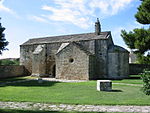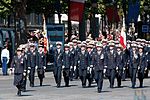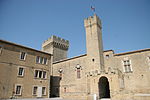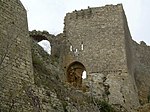The Château de l'Empéri is a 9th-century castle built on the rock of Puech which dominates the immense plain of Crau in the commune of Salon-de-Provence in the Bouches-du-Rhône département of France. It is listed as a monument historique (historical monument) by the French Ministry of Culture since 1956.The castle was the residence of the archbishops of Arles as well as the Holy Roman emperors. It is from the latter that the castle derives its name of the Empire which at this time included the East bank of the Rhône River. During 1481, at the time of the junction with Provence, it came under the power of kings of France. Arranged and embellished during the 15th and 16th centuries it was used as jails and barracks after the Révolution time. Hardly damaged by an earthquake in 1909, the buildings were restored by the Monuments Historiques during 1926 and hosted the museum of the old Salon, before hosting now the present museum of Art and History Military.
In the Empéri stayed several kings and queens of France. Francis I and his court, Louis XIV. In 1660 Catherine de' Medici came to consult Nostradamus, the famous astrologer would have predicted the throne for her three sons and the accession of her nephew, the future king Henri IV.
The castle contains faithful representations of the various army corps from the Napoleonic Wars to the present day in its museum. The museum also contains a copy of a bed belonging to Napoleon I at Saint Helena.
Together with the Fontaine moussue and Nostradamus, the castle has become a symbol of the city and attracts hundreds of thousands of tourists every year.










